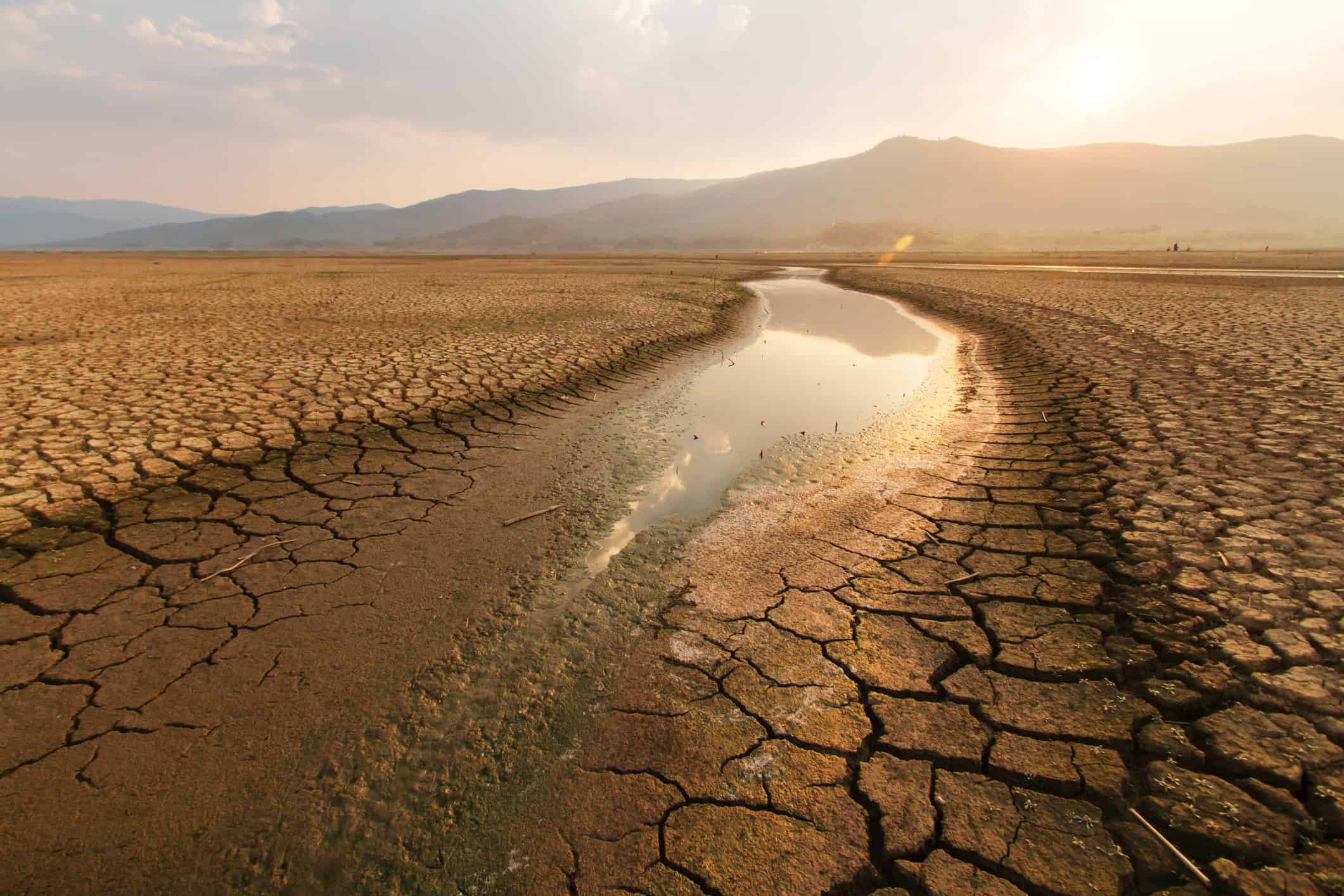The 21st Century started out as one of the driest periods in history…and the drought continues. According to a recent study from the Proceedings of the National Academy of Sciences (PNAS), during the decade from 2000-2010 the Missouri River was the driest it has been in the past 1,200 years. The Missouri River is one of the major rivers of the Mississippi River Basin. It feeds into the Mississippi River in St. Louis, Missouri. Read on to find out why the Mississippi River Basin just had its worst drought in 1,200 years.
Where is the Mississippi River Basin?
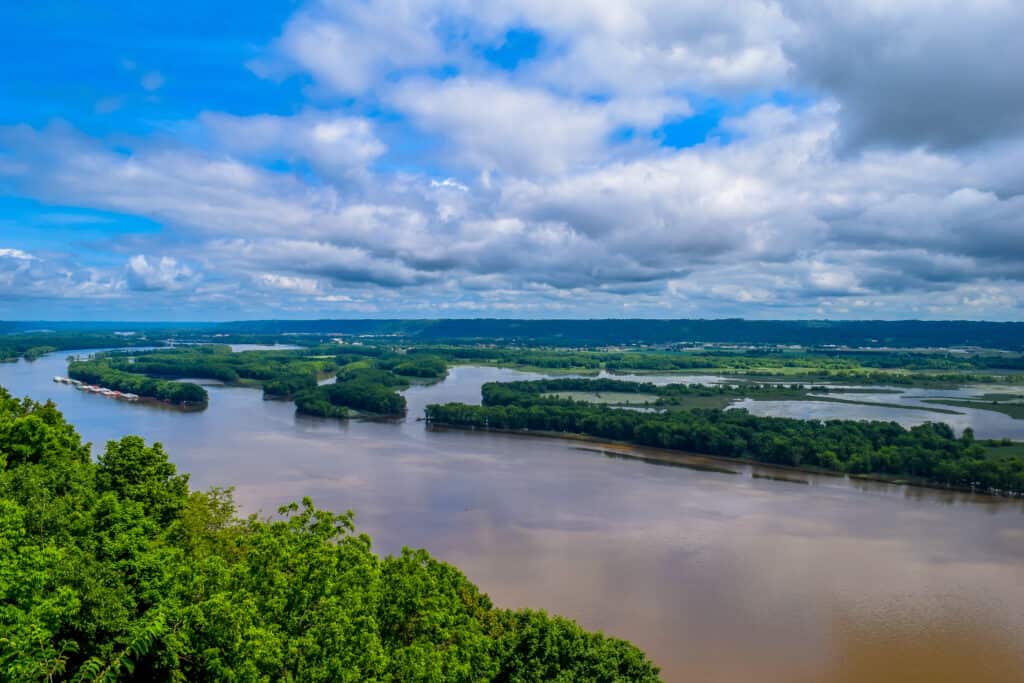
All of the rivers that feed into the Mississippi River are part of the Mississippi River Basin.
©EyeTravel/Shutterstock.com
The Mississippi River Basin is in the middle of the United States and includes rivers and tributaries from 31 states. The main stem of the system is the Mississippi River which flows from Lake Itasca in Minnesota, down the middle of the US to Louisiana and the Gulf of Mexico. Three major rivers flow into the Mississippi, two from the west and one from the east.
What rivers make up the Mississippi River Basin?
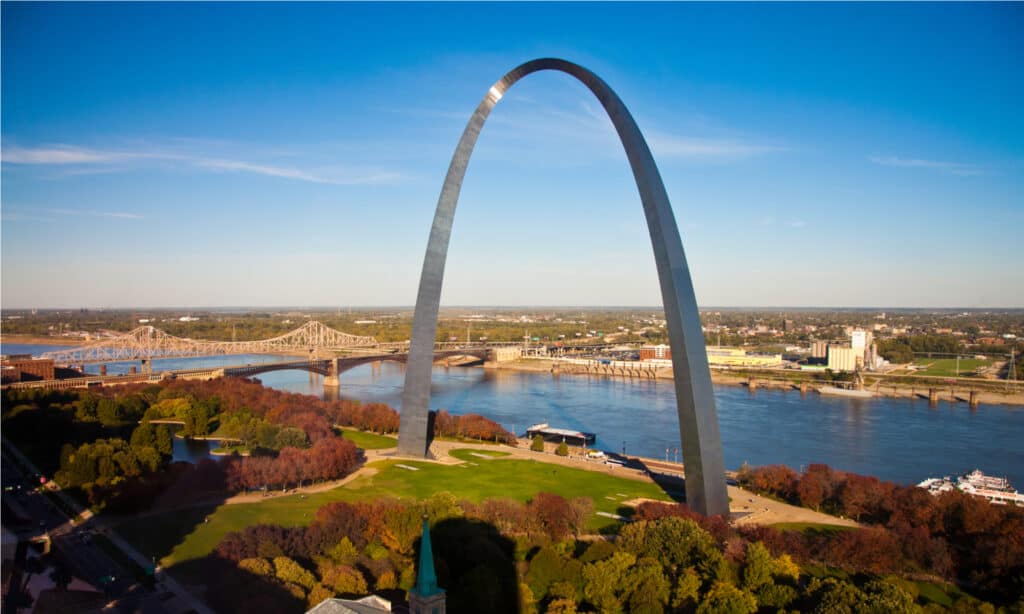
The Missouri River flows into the Mississippi River in St. Louis, Missouri.
©amolson7/Shutterstock.com
The Mississippi River is the main stem of the river and flows about 2,350 miles from north to south. The Missouri River feeds into the Mississippi from the NW. It starts in Montana eventually making its way SE down to St. Louis where it flows and joins the Mississippi. The Missouri River is actually longer than the Mississippi!
The Arkansas River starts in Colorado, in the Rocky Mountains and flows E/SE towards the Mississippi where it joins it in Napoleon, Arkansas. The Ohio River flows into the Mississippi from the east. It starts in Pittsburgh, Pennsylvania and flows SE to Cairo, Illinois.
So why has the Mississippi River Basin just had its worst drought in 1,200 years?
According to a recent study, there is evidence that the Missouri River has been at its driest between 2000-2010 in more than 1,200 years. This has had an significant impact on the water levels in the Mississippi River and the entire Mississippi River Basin.
The researchers indicated, “We find that temperature has increasingly influenced the severity of drought events by decreasing runoff efficiency in the basin since the late 20th century (1980s) onward.” There is a bit of a ripple effect but essentially climate change has increased the temperatures which reduces the snowpack in the Rocky Mountains. The snowmelt from the Rockies is what feeds the Mississippi River Basin. Higher temperatures also lead to higher evaporation rates along all of the rivers and lakes along the system.
What are the main causes of higher temperatures?
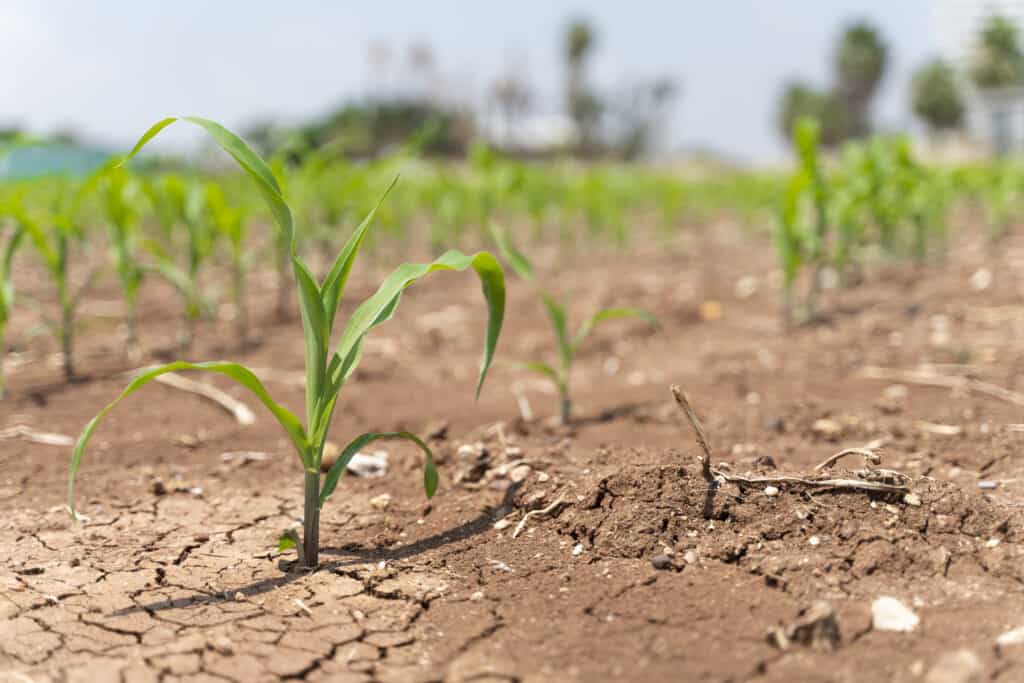
NASA believes human activity is leading to increased drought conditions.
©iStock.com/batuhan toker
There is some debate on the main cause of higher temperatures and climate change but there are a few causes that are consistently mentioned. NASA says “Human activity is the cause of increased greenhouse gas concentrations”. When they say “activities” they mean things like the burning of fossil fuels (oil and coal) which increases the level of Carbon Dioxide in the atmosphere.
The level of atmospheric Carbon Dioxide has risen 50% since the 1750’s. This is a problem because these greenhouse gasses trap the warm air in the atmosphere making the earth warmer. Methane levels have increased by 2.5 times since the 18th century and Nitrous Oxide has increased by 20% just since the Industrial Revolution.
What are other causes of climate change in the U.S.?
According to the EPA, the top five contributors to total US Greenhouse gas emissions by economic sector are:
- Transportation 27%
- Electricity 25%
- Industry 24%
- Commercial & Residential 13%
- Agriculture 11%
What about the idea of diverting the Mississippi River to the Colorado River to help the drought in the Southwest?
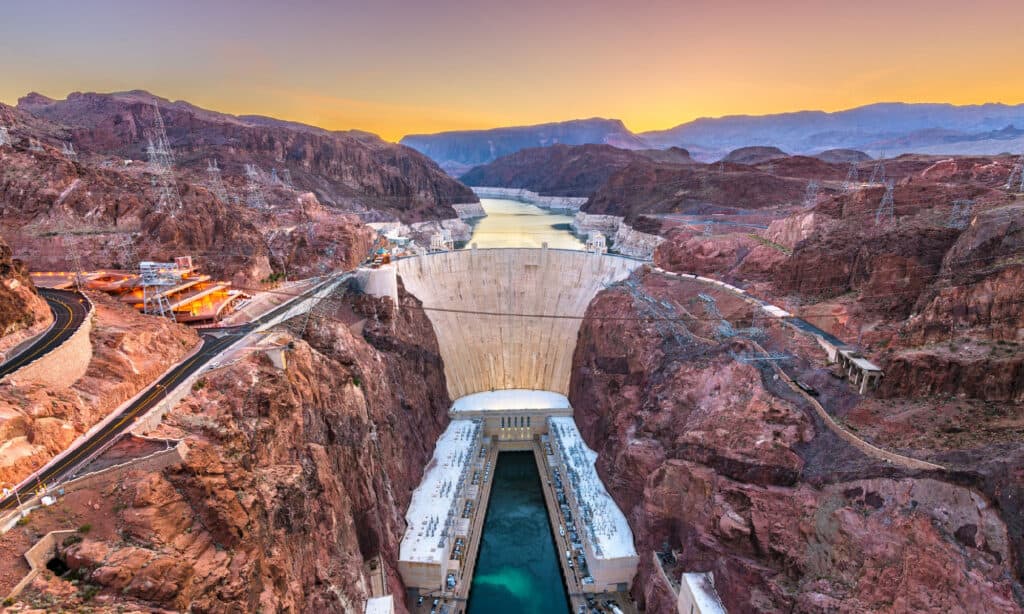
The Hoover Dam is the second largest dam in the U.S., it uses the power of the Colorado River to create electricity.
©iStock.com/Sean Pavone
In 2021, the Arizona legislature proposed a feasibility study be done to see if we could create a pipeline from the Mississippi River to the Colorado River to help ease the drought. Currently, two of the major reservoirs along the river, Lake Powell and Lake Mead are critically low.
If they continue to get lower they could reach “dead pool” level and the Hoover Dam and Glen Canyon Dam would have to be shut down. For example, Lake Mead is currently around 1,041.30 feet, if it reaches 895 there won’t be enough water to operate the hydro power dam (Hoover Dam). People in the SW states, nearly 40 million, depend on the Colorado River system for water and electricity.
One of the problems with diverting the Mississippi River is that the Mississippi River Basin just had its worst drought in 1,200 years!
Why else might diverting the Mississippi River not be a good plan?
Besides the fact that the Mississippi River Basin is also suffering from drought conditions, the U.S. Bureau of Reclamation did a thorough study in 2012 to see what it would cost. Their findings figured it would be around 14 billion dollars (in 2012, it would be around 18 billion today)! They also figured the project would take around 30 years to complete. That’s why the idea was dropped.
How does this drought affect the wildlife along the Mississippi River Basin?
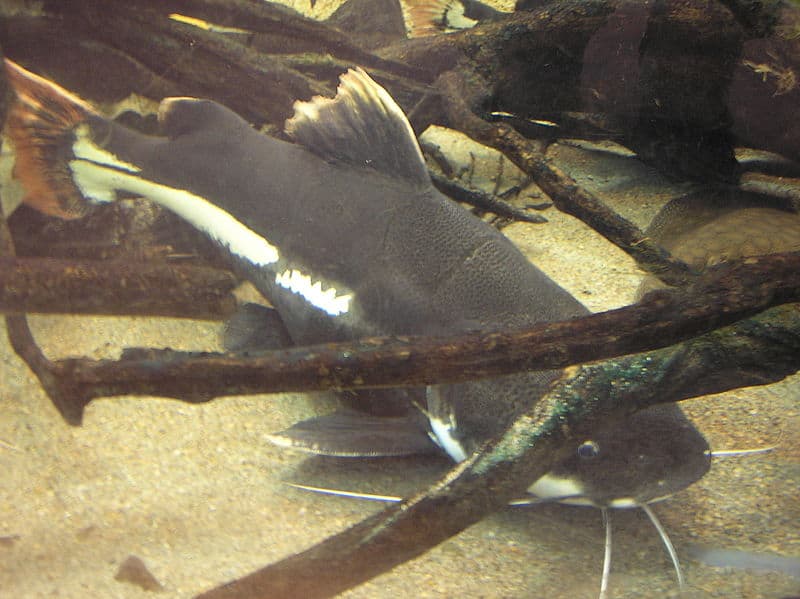
Wildlife along the Mississippi like
catfish
are affected by the low water levels.
©Iridescenti / Creative Commons – Original
People are not the only ones affected by the drought. The fish that depend on the rivers are highly affected as well as the waterfowl that migrate along the Mississippi. Common fish in the Mississippi are walleye, northern pike, sauger, largemouth bass, smallmouth bass, channel catfish, bluegill and crappies. The Mississippi Flyway is the migratory route for geese, ducks, sparrows, shorebirds, blackbirds, warblers, and thrushes.
What wildlife is affected at the end of the Mississippi River?
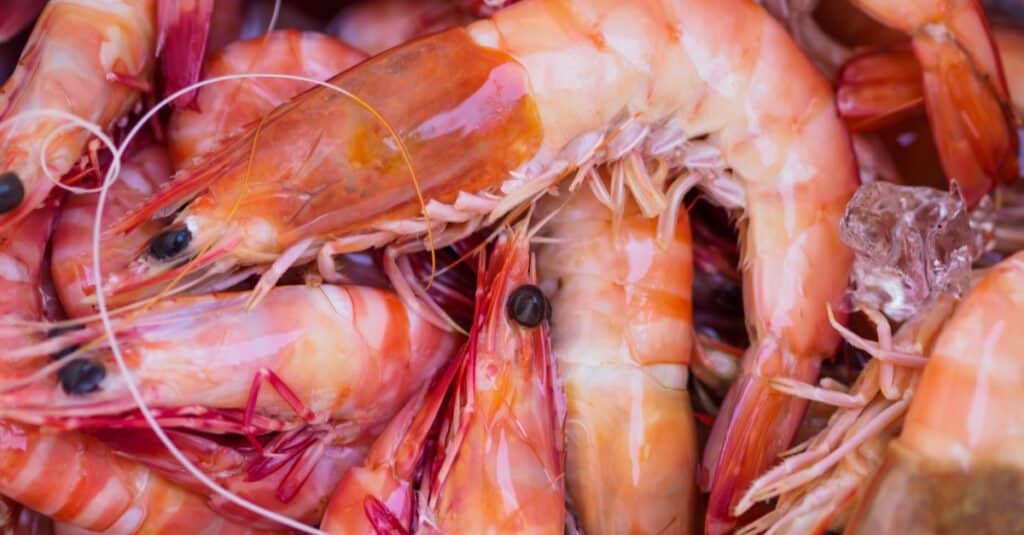
Shrimp and oysters that live in the Gulf of Mexico are affected by the Gulf of Mexico Dead Zone.
©burnettj/Shutterstock.com
The Mississippi River feeds the Gulf of Mexico so when water levels are down in the river it affects the conditions of the Gulf. Right now there is a dead zone that fluctuates in size with it sometimes reaching the size of New Jersey! The dead zone gets too much phosphorus from the fertilizer run off and when there are drought conditions it only gets worse. Non-swimming or weak-swimming animals can die in the dead zone because they can’t relocate to find food sources. So animals like shrimp and oysters are dying at unprecedented levels.
You can see how the whole system, from a river that starts in Minnesota, can affect marine animals in the Gulf if we don’t make some changes to help deal with the drought conditions. Conserving our own water and electricity use is something we can all do today to help.
Thank you for reading! Have some feedback for us? Contact the AZ Animals editorial team.

